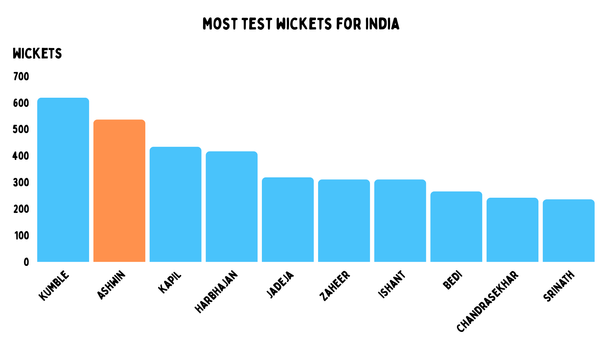Why teams win the toss and bowl in T20
Since the start of 2023, teams have won the toss and batted first 37% of the time, not not much more than a third. Yet, teams batting first have been winning at over 47%. There is a real disconnect here.

Stats by Varun Alvakonda
A few years ago I had a job interview in cricket. One of the questions was what I would do if I was in charge of a T20 team, and we won the toss, regardless of conditions or players. I said bat first. The people on the call did a double-take.
Everyone knows you bowl first in T20. I was breaking some ancient creed by daring to suggest otherwise.
This is how often teams have won T20 matches by batting innings in major T20 since 2010. Since 2015, there was a clear advantage in batting second. It is not massive, but it is there. In the last few years, it has eased off a little.

2022 is an interesting year because teams actually won more batting first that year. But still, teams decided mostly to bat second. It was so ingrained that even seeing the trend change didn’t affect the players who made the choice to chase.

2013 was the last year when teams decided to win the toss and bat more than chase in T20s. By 2017, almost three-quarters of teams would bowl first. It was T20 lore by this point. Unless conditions are completely in the favour of batting first, teams were just bowling first.

2017 is fun. Teams almost always chose to bowl, while the win percentage for games is still at nearly 46%. Nothing major happened that year, except almost all sides in the world decided to bowl first, even though they didn’t win at a similar rate.

There are many reasons teams bowl first. But the two biggest influences are that you don’t know how hard to bat in the first innings. It means you can be dismissed chasing too many runs, or end up being under par by batting safe. And the other is conditions, and by that we mainly mean dew, which makes it almost impossible to defend runs.

But even with those two things, teams take what should be a 50/50 game and turn it into a 53/47 match. That isn’t nothing; you now have a six per cent advantage. But it doesn’t seem to correlate with how cricket is being played at any time.
Since the start of 2023, internationals teams around the world have been batting first over 40% of the time, and that is still not a lot. But in major leagues, it's still so much lower.

In this time period, teams have won the toss and batted first 37% of the time, not not much more than a third. Yet, teams batting first have been winning at over 47%. There is a real disconnect here.

Win the toss, bowl first, think later.
Test cricket is clearly the opposite of T20. The old Australian idiom of winning the toss and then thinking about what you will do before batting first automatically still largely holds up. Teams still do that today. T20 cricket is entirely the opposite, but almost as automatic.

It isn’t the same everywhere. International teams still bat first, or at least some do. At the other end is the CPL, where no one bats first if they can help it. I mean, this is really full-on.

This is incredible. The win percentage of teams batting first is so close to 50%, yet 85% of the time teams bowl first. Am I missing something here?

This is true across all the leagues. The number of times people decide to win the toss and bowl first matches up with how often teams win in internationals and the BBL. Not that it has to completely match up, but it is weird that in so many of these leagues, sides are convinced they need to bowl first when batting first win more in their league.

Despite the fact that teams more or less win pretty much the same amount of times batting first as second, it does seem odd that teams are so convinced to actually always bowl up front.

Let us do some math for a minute.
Teams choose to bat first 37% of the time, and you win 50% of the tosses.
So if you win the toss and you choose to bat first every single time, and the opposition sends you in 63% of the time that means that you would bat first 81.5% of the time. Right?
You win 47.2% of those matches on average. But my theory is if you batted first 81.5% of the time, you would improve at setting totals. Your bowlers might also improve at bowling with the wet dewy ball.
You don’t have to worry about your team learning how to chase if you are an international team, because they would play in leagues and chase. If you have them in a franchise, batting second will still happen a lot when they play in other leagues or for their country.
So as a team you could actually play with the heads of the opposition teams. And it would mean that for any game (at least when it starts) your team would turn up at a ground knowing almost every time what they are going to do first. At the very least, the opposition would have to think hard about what to do at the toss and probably go against their own game plan to upset you.
Also, if you still win 47% of the time batting first, doesn’t that mean that setting a total and dew are actually fairly small obstacles anyway? Perhaps players are much more used to setting totals now.
There are times when it makes more sense to bat first. For example, in really hot conditions, it is better to put the fielding team in the sun, and let your players relax in the dugout.
There are of course times when doing all this doesn’t work, like if your batting is full of really good chasers, or your bowling is really rubbish. But you can set up a bat first team that makes par totals, and then bowling is your strength. And you might even save some money because bowlers are generally not as expensive as batters.
The point is, there are other ways, but T20 cricket seems obsessed with this.
The real change comes around 2016, and I wondered if that was as simple as when a major team started doing it and having success. You can see that since then, teams have been choosing to bat first 37% of the time and winning at 47% when going in up front.

What about just the international sides? Usually, when a trend gets big, it starts in the leagues. But it’s the international teams that spread it. Afghanistan and Canada are the only two who bat first a decent amount, with Uganda not too far away. But even then, it’s not much.

The other end is more interesting. India rarely does and England almost never.
Isn’t that weird? Most of these matches are bilaterals, and you know when you head to a T20 World Cup the coin toss is 50%. So wouldn’t you want to actually prepare yourself and try make sure that you bat and bowl first around 50% of the time coming in? Losing a bilateral match does not mean as much.
Yet this trend is so full on. Look at these teams who are choosing to bat first again and again, despite the fact they are often really good at batting first anyway.

But the most interesting things in these World Cup semi-finals are at either end. In the first semi-final, Afghanistan chose to bat first. They do that more than anyone, and South Africa would have done the same. And it is what they do really well. It was the wrong decision this time.
Then you have England at the other end, they basically don’t ever choose to bowl first. Even though they win more than 50% of their matches when batting up front. They let every team in the world know what they are going to do before. But they are so good, it doesn’t matter.
And so could they be even better if they spent more of their time batting first to work that out as well? Well they decided not to. This cricket team is so algorithmic that they didn’t win the toss and bat once in five years. They may not have invented the theory, but they certainly played a part in this being such a big trend.

And yet, even for all of that, when you look at them, they win batting first quite a lot. Does this mean that England is wrong? No. Does it mean they are as rounded as they can be? Certainly not.

In Tests, teams bat first too often, and in T20, it is the opposite. England and Afghanistan both won the toss, did what they do and lost. There are no right answers, and had they reversed their themes, they would likely still have lost. The idea that there is only one answer to T20 cricket is clearly not true.
India batted first, they seemed to go okay.



